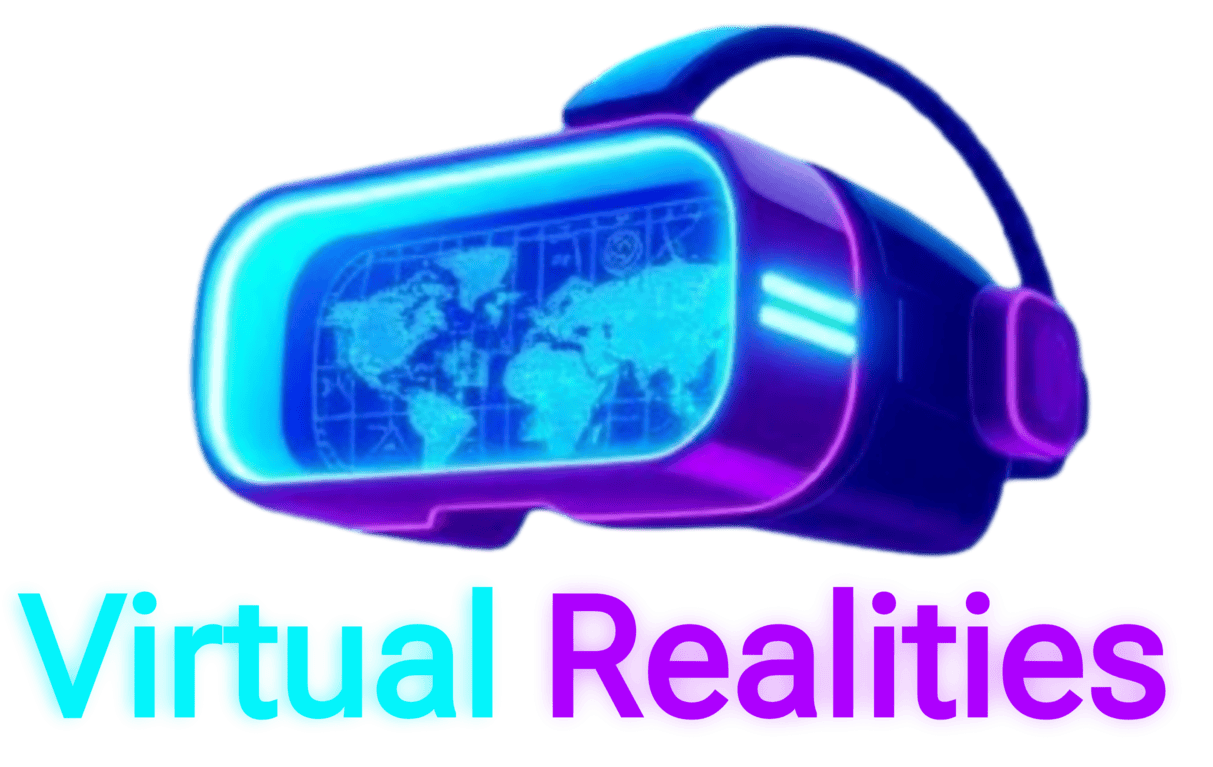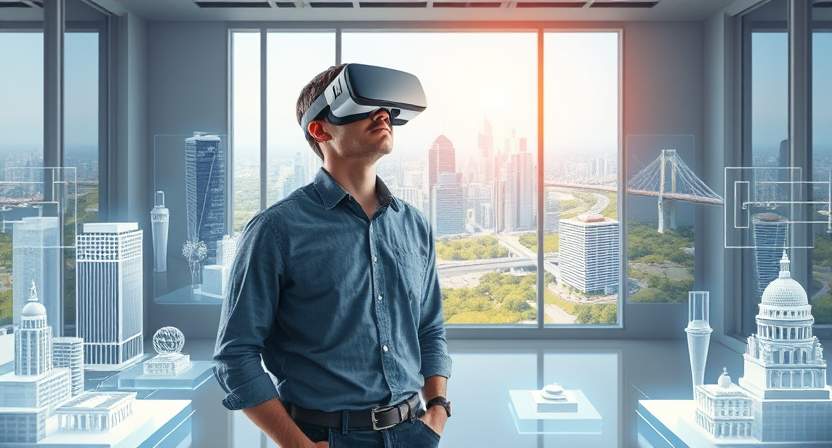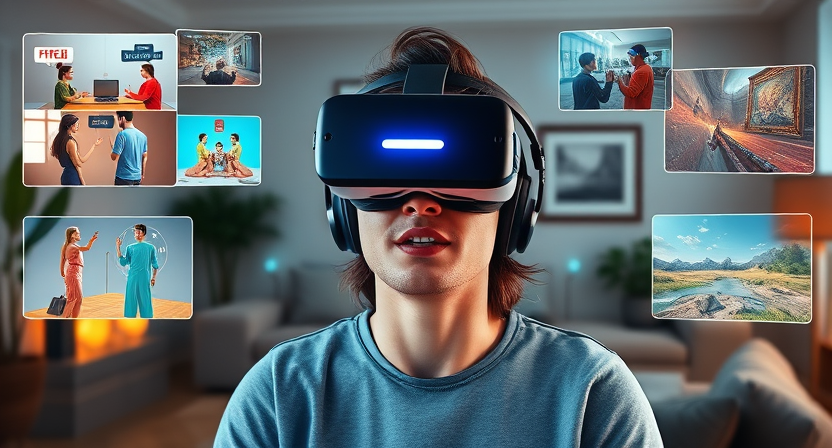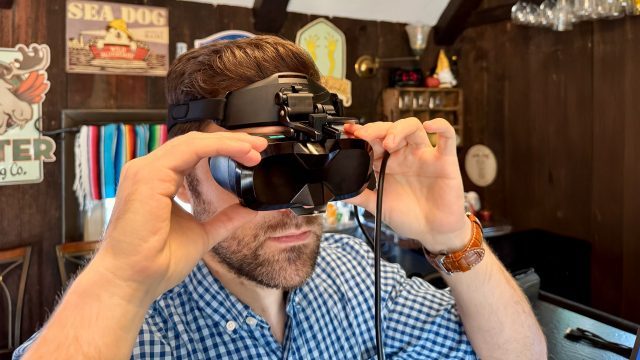The Potential of Virtual Reality in Education

Virtual Reality (VR) has the potential to revolutionize the field of education by providing immersive and interactive learning experiences for students of all ages. By creating virtual environments that simulate real-world scenarios, VR technology can enhance student engagement and understanding of complex concepts across various subjects. For example, students can explore historical landmarks in ancient civilizations, dissect virtual organisms in biology, or even conduct scientific experiments in a safe and controlled virtual space.
Furthermore, VR can cater to different learning styles and preferences by offering personalized and adaptive learning experiences. Students can learn at their own pace, receive immediate feedback, and practice real-life skills in a risk-free virtual environment. This technology opens up new possibilities for distance learning, enabling students from all over the world to access quality education without geographical constraints. As educators continue to explore the potential of VR in the classroom, we can expect to see innovative teaching methods that cater to the diverse needs of learners in the digital age.
Enhancing Remote Work with Virtual Reality
Virtual reality technology has the potential to revolutionize the way we approach remote work. By creating immersive virtual environments, employees can feel like they are truly present with their colleagues, even if they are miles apart. The ability to interact in a virtual space can enhance collaboration, creativity, and overall productivity for remote teams.
Moreover, virtual reality can bridge the gap between in-person and remote work experiences by simulating physical workspaces. With VR headsets, workers can attend virtual meetings, brainstorm ideas on virtual whiteboards, and participate in virtual team-building activities, fostering a sense of connectedness and engagement. This technology not only facilitates day-to-day tasks but also has the power to transform the remote work landscape into a more interactive and inclusive environment.
Virtual Reality in Healthcare Training
Virtual Reality technology is revolutionizing the field of healthcare training by providing immersive and interactive experiences for medical professionals. Through VR simulations, healthcare practitioners can practice complex medical procedures in a realistic virtual environment, helping them develop crucial skills and enhance their confidence before performing these procedures on real patients. This hands-on approach allows for a safe space to learn and make mistakes, ultimately improving patient safety and outcomes in the actual clinical setting.
Furthermore, Virtual Reality offers healthcare trainees the opportunity to explore human anatomy in a three-dimensional space, allowing for a deeper understanding of the body’s structure and functions. By visualizing intricate anatomical details and medical conditions through VR models, medical students and professionals can enhance their knowledge and diagnostic skills. This innovative way of learning promotes active engagement and retention of information, paving the way for more effective and efficient training in the healthcare industry.
Virtual Reality Gaming Experiences
Virtual reality (VR) gaming experiences have revolutionized the way people interact with video games. By immersing players in a three-dimensional environment, VR technology transports them to fantastical worlds and challenges their skills in a whole new way. Gamers can explore virtual terrains, battle foes, and solve puzzles as if they were truly present in the game world.
The level of immersion and interactivity that VR gaming offers creates a more engaging and realistic experience for players. Instead of simply controlling a character on a flat screen, users can physically look around, reach out, and interact with their surroundings in the virtual world. This heightened sense of presence and agency enhances the overall gaming experience and opens up new possibilities for game developers to create innovative and captivating experiences for players.
Improving Communication with Virtual Reality
Virtual Reality technology has revolutionized how we communicate and interact with one another in various settings. By immersing users in a virtual environment, VR has the potential to enhance communication by providing a more engaging and realistic experience. Through avatars and virtual spaces, individuals can engage in conversations, presentations, and interactions as if they were physically present, breaking down the barriers of distance and enabling more seamless communication among remote teams and individuals.
Furthermore, Virtual Reality offers innovative ways to convey complex ideas and concepts, making communication more effective and accessible. By visualizing data, concepts, and scenarios in a 3D environment, VR can help bridge communication gaps and improve understanding among different stakeholders. Whether it’s conveying architectural designs, training employees on new processes, or presenting complex information in a more digestible format, Virtual Reality has the potential to revolutionize the way we communicate and collaborate in various industries.
Training and Development with Virtual Reality

One of the most transformative applications of virtual reality (VR) technology is in the realm of training and development. With VR, individuals can now immerse themselves in realistic, interactive simulations that mimic real-world scenarios, offering a hands-on learning experience like never before. This innovative approach to training allows users to practice new skills, improve decision-making abilities, and gain valuable experience in a controlled virtual environment.
Moreover, VR training and development programs have been shown to increase engagement and retention rates compared to traditional training methods. By providing a dynamic and engaging learning environment, VR enables users to actively participate in their learning process, leading to better knowledge retention and skill acquisition. This immersive technology also offers the flexibility to train individuals remotely, reducing the need for in-person training sessions and providing a cost-effective solution for organizations looking to upskill their workforce.
Virtual Reality in Architecture and Design
Virtual reality has revolutionized the way architects and designers conceptualize and present their projects. By immersing users in a simulated environment, VR technology allows for a more detailed exploration of spatial layouts, building designs, and material selections. Architects can walk clients through a virtual building, giving them a realistic feel of the space before construction even begins. Designers can also experiment with different lighting conditions and furniture placements to create the most aesthetically pleasing and functional designs.
Moreover, virtual reality is increasingly being used for collaborative design processes, enabling teams from different locations to work together in real-time on a shared digital platform. This level of interactivity and teamwork enhances creativity and efficiency in the design process, leading to more innovative and well-executed architectural and design solutions. With VR technology, the possibilities for creating immersive and engaging architectural experiences are limitless, opening up new avenues for creativity and client engagement.
Virtual Reality in Sports Training
Virtual reality (VR) is rapidly revolutionizing the realm of sports training. Athletes can now immerse themselves in simulated environments that replicate real-life scenarios, providing them with opportunities to refine their skills and strategies in a highly interactive and engaging way. Through VR technology, athletes can work on enhancing their reactions, decision-making abilities, and overall performance in a controlled and repeatable setting.
Moreover, VR in sports training enables coaches to analyze and track the progress of their athletes more effectively. By utilizing VR simulations, coaches can assess player performance, identify areas for improvement, and tailor training regimens to address specific weaknesses. This personalized approach to training not only boosts individual player development but also contributes to the overall success of the team.
Virtual Reality for Skill Development
Virtual Reality technology has opened up new horizons for skill development across various industries. By immersing users in realistic and interactive simulations, VR provides a unique and effective way to practice and enhance both hard and soft skills. From mastering complex technical procedures to improving communication and leadership abilities, the immersive nature of VR experiences offers a hands-on approach to skill-building that traditional methods cannot match.
One significant advantage of using VR for skill development is the ability to provide real-time feedback and assessments. By monitoring users’ actions and decisions within the virtual environment, instructors and trainers can offer personalized guidance and evaluations instantly. This immediate feedback loop enables individuals to identify areas of improvement quickly and adapt their learning strategies accordingly, leading to more efficient and tailored skill development outcomes.
Virtual Reality in Mental Health Therapy
Virtual reality has emerged as a groundbreaking tool in the field of mental health therapy, offering a promising avenue for innovative interventions. By immersing individuals in computer-generated environments, VR therapy can provide a safe space for patients to confront and manage their fears, anxieties, and traumas. This technology allows therapists to create controlled simulations that replicate real-life situations, enabling patients to practice coping strategies in a virtual setting before applying them in the real world.
Moreover, virtual reality therapy has shown potential in treating various mental health conditions, such as PTSD, phobias, anxiety disorders, and depression. Through exposure therapy and cognitive behavioral techniques delivered in a virtual environment, patients can gradually desensitize themselves to triggers, alleviate symptoms, and build resilience. The interactive and engaging nature of VR experiences can enhance the therapeutic process, making it a valuable supplement to traditional talk therapy and medication in the realm of mental health treatment.
Virtual Reality for Team Collaboration

With the advent of virtual reality technology, team collaboration has taken on a whole new dimension. By immersing team members in a shared virtual environment, VR enhances communication and fosters a sense of presence that traditional video conferencing tools cannot replicate. Teams can interact, brainstorm, and problem solve as if they were physically present in the same room, irrespective of their actual locations.
Virtual reality for team collaboration offers a myriad of benefits, such as increased engagement, improved information retention, and enhanced creativity. By allowing team members to collaborate in a virtual space that mimics real-world interactions, VR breaks down the barriers of distance and time zones. This technology enables teams to work together seamlessly, bridging gaps and fostering a stronger sense of unity and teamwork.
Virtual Reality in Marketing Campaigns
Virtual Reality has emerged as a powerful tool in transforming marketing campaigns, offering innovative ways to engage with audiences and create memorable brand experiences. By immersing consumers in interactive virtual environments, companies can effectively convey their brand message and showcase products or services in a more engaging and impactful way. Through VR experiences, marketers can transport consumers to virtual stores, events, or demonstrations, allowing them to explore and interact with the brand in a way that traditional advertising cannot match.
Moreover, virtual reality technology enables marketers to gather valuable data and insights on consumer behavior and preferences. By analyzing user interactions within virtual experiences, marketers can tailor their campaigns and content to better resonate with their target audience. This data-driven approach not only enhances the effectiveness of marketing strategies but also allows for a more personalized and engaging customer experience, ultimately leading to increased brand loyalty and conversions.
Virtual Reality for Language Learning
Virtual reality has emerged as a promising tool for language learning, offering immersive experiences that engage learners in realistic scenarios. By placing users in interactive environments where they can practice listening, speaking, and reading, VR technology enhances language acquisition by providing a more engaging and memorable learning experience. Through virtual reality, language learners can practice their language skills in a safe and controlled space, building confidence and fluency in a way that traditional methods often struggle to achieve.
Furthermore, virtual reality for language learning allows users to experience cultural contexts firsthand, providing a deeper understanding of the language’s nuances and usage. By simulating real-life situations such as ordering food in a restaurant or navigating a city, learners can practice language skills in context, improving their ability to communicate effectively in authentic scenarios. This immersive approach to language learning not only enhances linguistic proficiency but also fosters cultural awareness and empathy, making it a valuable tool for those looking to master a new language.
Virtual Reality in Historical and Cultural Education
As we immerse ourselves in the world of virtual reality (VR), we are discovering new and innovative ways to engage with historical and cultural education. Through the power of VR technology, users can step back in time and experience significant moments in history firsthand. By virtually visiting ancient civilizations, iconic landmarks, and pivotal events, learners can deepen their understanding and appreciation of different cultures and time periods. This experiential learning approach not only makes history more accessible and engaging but also helps to create a sense of empathy and connection with the past.
Furthermore, VR opens up endless possibilities for cultural education by allowing users to explore art, music, traditions, and architecture from around the globe. Through interactive virtual tours of museums, galleries, and cultural sites, individuals can gain a deeper insight into the rich tapestry of human history and creativity. By breaking down physical and geographical barriers, VR has the potential to foster cross-cultural appreciation and understanding, making it a valuable tool for promoting diversity and inclusivity in education.
Virtual Reality for Simulations and Training
In various industries, virtual reality (VR) is revolutionizing the way simulations and training programs are conducted. By immersing users in realistic and interactive environments, VR technology offers a hands-on experience that enhances learning outcomes. For example, in the field of aviation, pilots can practice emergency procedures in a virtual cockpit, preparing them for challenging situations without any safety risks.
Moreover, VR simulations can be customized to meet specific training needs, allowing users to repeatedly practice tasks until mastery is achieved. This level of repetition and feedback is essential for skills development and can greatly benefit professions such as healthcare, where practitioners can practice complex surgical procedures in a virtual setting before operating on real patients. By harnessing the power of VR for simulations and training, industries can improve efficiency, effectiveness, and overall performance.
Enhancing Customer Service with Virtual Reality

Virtual reality (VR) technology is revolutionizing the way businesses approach customer service. By implementing VR tools, companies can offer immersive and interactive experiences to their customers, enhancing their overall satisfaction. For instance, VR can enable customers to virtually experience a product before making a purchase, giving them a better understanding of its features and functionalities.
Moreover, VR can also be utilized for virtual tours, allowing customers to explore different locations or properties without physically being there. This can be particularly useful in industries such as real estate or tourism, where showcasing properties or destinations through VR can provide a more engaging and informative experience for customers. Overall, integrating VR into customer service strategies can lead to increased customer engagement, higher retention rates, and ultimately, improved brand loyalty.
Virtual Reality in Engineering and Construction
Virtual reality technology is revolutionizing the way engineering and construction projects are planned, visualized, and executed. By leveraging VR tools, professionals in these industries can create immersive 3D models of projects, allowing them to explore designs in a realistic virtual environment. This enables stakeholders to identify potential issues, make informed decisions, and streamline the construction process.
Moreover, virtual reality in engineering and construction facilitates better collaboration among team members located in different regions. Through VR platforms, designers, architects, engineers, and clients can interact in a shared virtual space, making it easier to communicate ideas, provide feedback, and ensure that everyone is aligned on the project’s vision. This enhanced collaboration leads to more efficient project management and ultimately results in delivering high-quality construction projects within budget and schedule constraints.
Virtual Reality for Virtual Meetings and Events
Virtual Reality technology has revolutionized the way virtual meetings and events are conducted. Through the use of VR headsets and immersive environments, participants can engage in meetings and events as if they were present in the same physical space. This not only enhances the overall experience but also enables more meaningful interactions and collaborations among attendees.
Furthermore, VR solutions for virtual meetings and events offer a level of customization and personalization that traditional video conferencing tools cannot match. From creating virtual boardrooms to hosting virtual trade shows and conferences, the possibilities are endless. This versatile technology has the potential to bridge geographical barriers and bring people together in ways that were previously unimaginable, making virtual meetings and events more engaging and productive.
Virtual Reality in Automotive Design and Testing
In the automotive industry, virtual reality technology has revolutionized the way vehicles are designed and tested. By immersing designers and engineers in a virtual environment, they can explore and manipulate 3D models of cars, trucks, or motorcycles with unprecedented realism and detail. This allows for more efficient design iterations, ensuring that every aspect of the vehicle is carefully considered before production begins.
Moreover, virtual reality enables automotive manufacturers to conduct thorough testing in a simulated environment, saving both time and resources. Engineers can simulate various driving conditions, test different components, and even conduct crash tests without the need for physical prototypes. This not only speeds up the testing process but also enhances safety by identifying potential issues early in the design phase.
The Impact of Virtual Reality on Work, Play, and Learning
Virtual reality has revolutionized the way we approach work, play, and learning. In the workplace, VR technology is being utilized to enhance employee training, simulate real-world scenarios for skill development, and facilitate remote collaboration among teams located in different parts of the world. This immersive experience has not only increased efficiency but has also contributed to a more engaging and interactive learning environment.
In the realm of entertainment and leisure, virtual reality has brought about a new level of immersion in gaming experiences, allowing players to immerse themselves in fantastical worlds and scenarios. Additionally, VR technology has expanded beyond gaming to offer unique opportunities for exploring historical and cultural sites, engaging in virtual travel, and creating personalized learning experiences. The impact of virtual reality on play has sparked creativity, encouraged exploration, and provided a platform for endless possibilities in the realms of entertainment and education.




